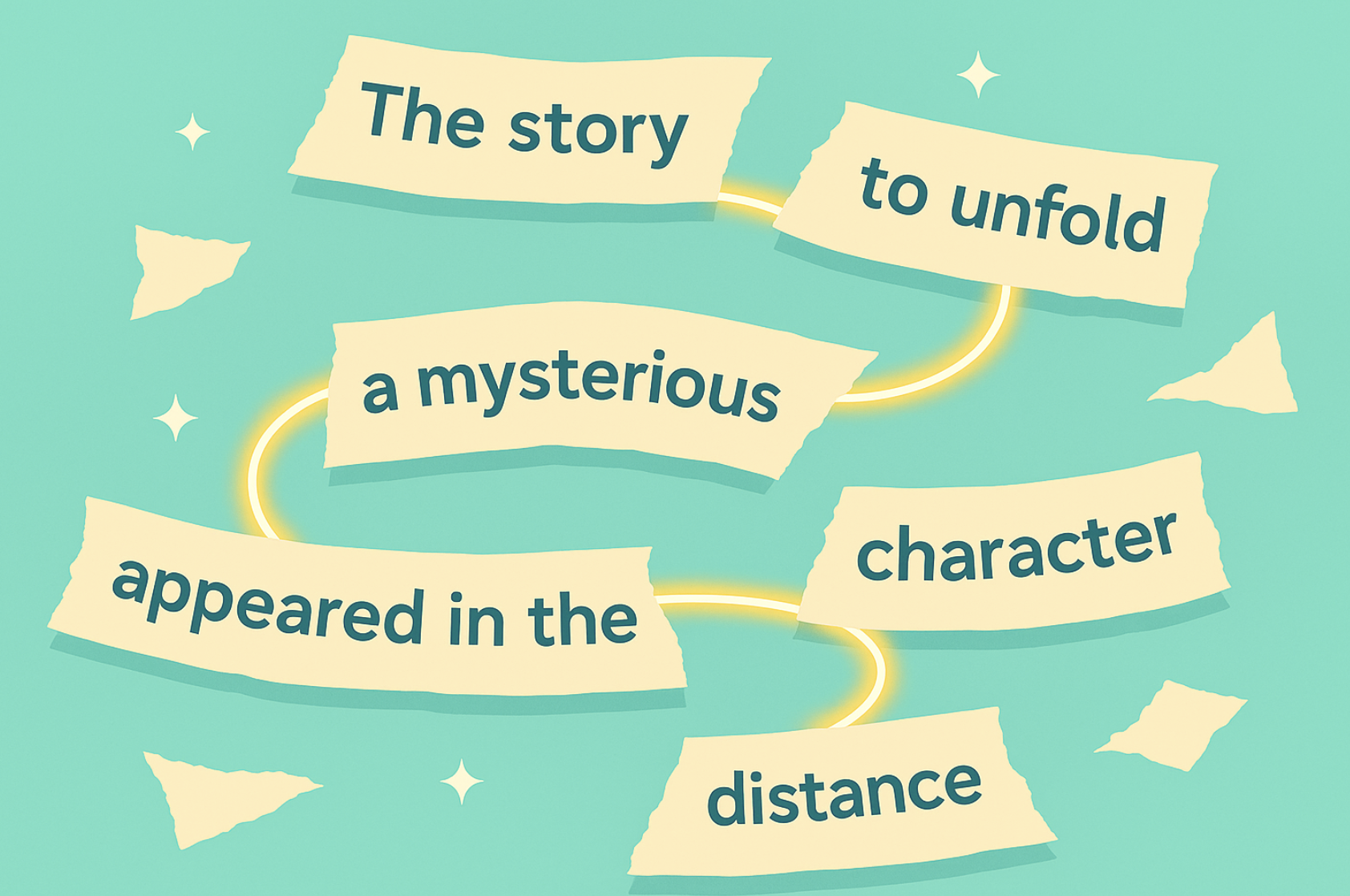Imagine this: you’re reading a story where the hero is already sprinting through a dense jungle, dodging flying arrows, with a roaring dinosaur hot on their heels. You didn’t get the “once upon a time” setup—no polite introductions, no slow build-up. You just jumped right into the chaos. That’s the magic of starting in medias res—a Latin phrase meaning “in the middle of things.”
But what is in medias res, exactly? Simply put, it’s a storytelling trick that tosses you directly into the heart of the action, skipping the usual exposition and background fluff. Instead of waiting for the story to warm up, you get hooked immediately, riding the wave of suspense and mystery from the get-go.
Writers love this technique because it grabs attention and keeps readers glued to the page, eager to piece together what led to the madness. And readers? They get a thrill, like being thrown into a roller coaster mid-loop, dizzy but loving every second. Understanding the in medias res meaning unlocks a whole new appreciation for how stories grip us from the very first line. So buckle up, because mastering this storytelling gem will have you crafting or spotting captivating tales like a pro!
In Medias Res Definition: What It Really Means, and Why It Matters
Alright, let’s get down to brass tacks: what is this mysterious “in medias res” thing everyone’s talking about? Simply put, in medias res is a Latin phrase that literally translates to “into the middle of things.” Think of it as starting your story not with a polite hello or a slow walk through the backstory, but by plopping your reader right in the thick of the action, kind of like skipping the appetizer and diving straight into the main course at dinner. No nibbling, just full-on flavor!
The in medias res meaning in literature is all about hooking your audience from the get-go by dropping them into a moment already buzzing with energy. Instead of patiently explaining what happened before, the story kicks off with tension, conflict, or drama already underway. This technique instantly amps up the pacing, making the narrative feel urgent and alive. The result? Readers are compelled to stick around to piece together the “why” and “how” while enjoying the ride.
Imagine watching a movie that starts with a car chase instead of a character waking up and brushing their teeth. You’re immediately engaged, heart racing, and curious to know what led to this wild scene. That’s the power of in medias res—it doesn’t just tell a story; it throws you into it.
This storytelling style isn’t new. Classic epics like Homer’s The Iliad famously begin in the middle of a war, trusting the audience to fill in the gaps as the tale unfolds. Modern writers and filmmakers love it too—from thrillers to dramas—because it respects the audience’s intelligence and impatience. Nobody wants to sit through endless setup when they can jump right into the juicy parts!
In short, the in medias res meaning in literature goes beyond a fancy phrase. It’s a strategic narrative choice that energizes stories, deepens engagement, and transforms how we experience tales. Whether you’re a writer plotting your next novel or a reader hunting for that next page-turner, understanding this technique will give you a sharper eye—and maybe even inspire you to start your story smack dab in the middle.
Why Start in the Middle? The Magic of In Medias Res
Let’s be honest—nobody enjoys a story that starts like this: “Once upon a time, in a village far, far away…” Yawn. Slow beginnings are like waiting in line at the DMV—painful and, frankly, avoidable. That’s exactly why writers adore the in medias res meaning—it’s a storytelling cheat code that grabs your attention and never lets go.
Starting in medias res means kicking off a story right in the middle of the action, skipping the dull setup and straight into the good stuff. The result? Instant suspense, curiosity, and that “I gotta know what happens next” feeling that keeps readers glued to the page. Instead of patiently spoon-feeding background info, the writer throws you into the chaos and trusts you to catch up. And guess what? Your brain loves the challenge.
This technique forces the audience to piece together context, turning reading into a sort of detective game. Who’s this character running for their life? Why is the room on fire? What exactly happened five minutes ago? By not spelling everything out, in medias res boosts engagement, making readers active participants in the story rather than passive observers.
Classic and modern storytellers alike swear by this method. From epic poems to blockbuster films, the in medias res meaning is their secret sauce for pacing and intrigue. It’s like jumping on a roller coaster after it’s already speeding through loops—thrilling, disorienting, and impossible to look away from.
So, if you’re tired of snoozy intros and want to grab your reader’s attention like a pro, starting in medias res is where the magic begins. After all, who wouldn’t want to skip the small talk and get straight into the juicy middle?
In Medias Res Examples: Famous Openings That Throw You Right In
Want to see in medias res in action? Let’s dive into some famous openings that ditch the slow build and catapult you straight into the story’s heartbeat.
The Illiad
First up, Homer’s The Iliad—talk about a classic! This ancient epic starts smack in the middle of the Trojan War, with Achilles already furious and refusing to fight. No “once upon a time” here; Homer trusts you to fill in the backstory as the drama unfolds. It’s like joining a heated group chat halfway through a family argument—awkward but gripping.
Star Wars: A New Hope
Fast forward to modern times, and Star Wars: A New Hope wastes zero time. The film opens with a massive space battle—the Rebel ship being chased, lasers flying everywhere, and Princess Leia sending out a secret message. No peaceful Tatooine sunrise or backstory dump. You’re immediately hooked, scrambling to understand who’s who and what’s at stake. Talk about a stellar kickoff!
Breaking Bad
Then there’s Breaking Bad, which famously begins with Walter White in his underwear, driving a speeding RV through the desert with sirens blaring behind him. It’s chaotic, mysterious, and instantly raises questions: Who is this guy? What’s he running from? The show throws you into the deep end, and you swim along to piece it all together.
Each of these examples nails the in medias res meaning by sparking curiosity and adrenaline right from the first scene or line. They show that starting in the middle doesn’t confuse—it electrifies. So next time you start a story, take a page from these pros and just jump in!
Mastering In Medias Res: Tips for Writers to Jump in Like a Pro
Ready to start your story in the thick of things, but worried about confusing your readers? Fear not—mastering the art of jumping right into the action is all about balance. Here are some pro tips to wield this storytelling technique like a champ.
Tip #1
First, remember that while starting in medias res (or “in the middle of the story”) means skipping the usual setup, you still need to give your audience just enough clues to keep them from getting lost. Drop hints, reveal key details through dialogue or action, and sprinkle in flashbacks or brief explanations to fill in the blanks. It’s a dance between mystery and clarity—keep readers intrigued without leaving them scratching their heads.
Tip #2
Next, embrace creativity and don’t be afraid to get bold. This technique rewards writers who throw caution to the wind and open with tension, conflict, or unexpected drama. Think of it as plunging your reader into a thrilling scene and trusting them to catch up as the story unfolds.
Tip #3
Finally, practice makes perfect. Experiment with different points to dive in and watch how your pacing tightens and your readers lean in. The power of starting in the midst of events lies in grabbing attention fast and refusing to let go. So take the plunge—your story (and your audience) will thank you!
Ready, Set, Middle! Why Your Next Story Needs In Medias Res
To wrap it up: starting in medias res is like launching your story with a firecracker instead of a sparkler. It grabs attention, amps up suspense, and keeps readers glued from the very first line. This technique isn’t just a fancy literary trick—it’s a powerhouse method that transforms how stories unfold, making every word count.
If you’re itching to shake things up, why not skip the slow intro and dive straight into the action in your next creative project? Trust your readers to piece together the backstory as you thrill them with twists, tension, and surprises.
So, whether you’re a seasoned writer or a curious storyteller, remember: sometimes the best place to start… is right in the middle. Go ahead—jump in boldly. The story’s waiting.
FAQs – In Medias Res Meaning
Q1: How do you say in medias res?
In medias res is pronounced as “in MEH-dee-us rays” (with a soft “s” sound, like “rays”).
Q2: What is the difference between a cold open and in medias res?
A cold open is a technique where a story or episode starts immediately with a scene before any titles or credits, often to grab attention. In medias res specifically means starting the narrative in the middle of the action or conflict, regardless of the presence of titles. So, while a cold open can be used in medias res, not all in medias res beginnings are cold opens.
Q3: How do you start in medias res?
To start in medias res, open your story right in the middle of an intense or important moment—action, conflict, or drama—and gradually reveal the backstory through dialogue, flashbacks, or character thoughts as the plot unfolds.
Q4: What are the disadvantages of in medias res?
The main disadvantages are the risk of confusing readers if too little context is given upfront, and the potential to overwhelm the audience with action without enough grounding. It requires careful balancing to keep the story clear while maintaining suspense.
Q5: What is the effect of in medias res?
In medias res grabs the audience’s attention instantly, creates suspense, and makes the story feel dynamic and engaging. It encourages active participation from readers or viewers as they piece together what happened before.
Q6: What is the opposite of in medias res?
The opposite of in medias res is ab ovo, a Latin term meaning “from the egg,” which refers to starting a story from the very beginning, often with detailed background or chronological exposition.








